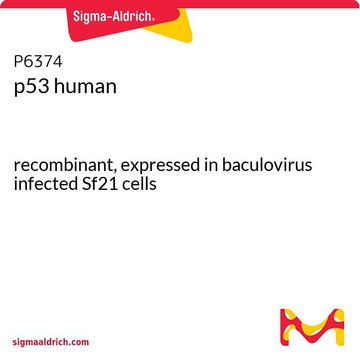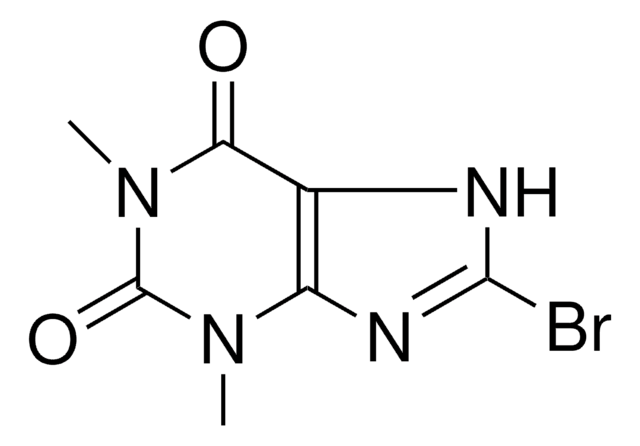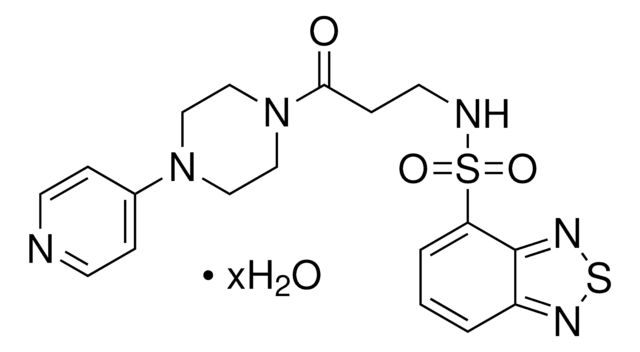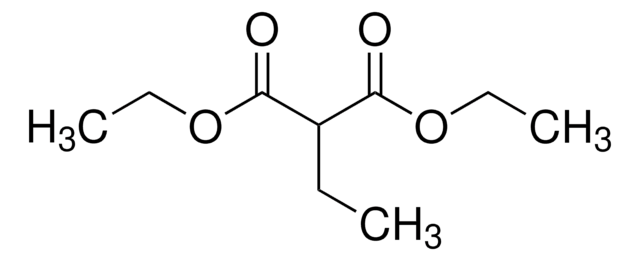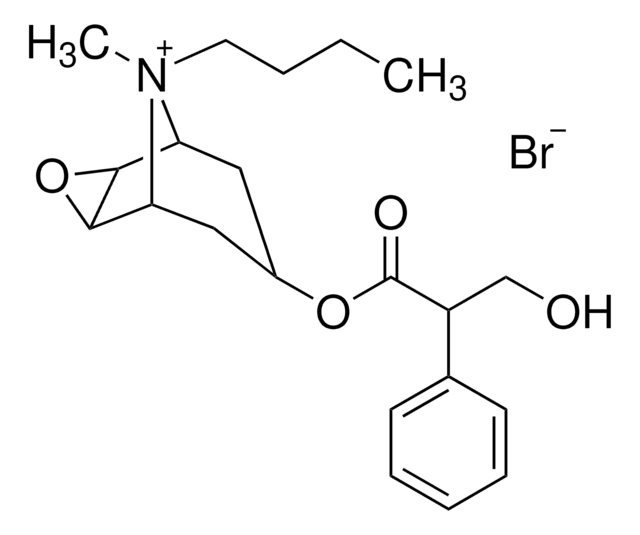SML0319
Caramiphen hydrochloride
≥98% (HPLC)
别名:
2-(Diethylamino)ethyl 1-phenylcyclopentane-1-carboxylate hydrochloride, Caramiphenium chloride salt, G 2747, Panparnit, Parpanil, Parpanit, Pentaphen, Pentaphene hydrochloride
About This Item
推荐产品
品質等級
化驗
≥98% (HPLC)
形狀
powder
顏色
white to beige
溶解度
H2O: ≥5 mg/mL
儲存溫度
2-8°C
SMILES 字串
Cl.CCN(CC)CCOC(=O)C1(CCCC1)c2ccccc2
InChI
1S/C18H27NO2.ClH/c1-3-19(4-2)14-15-21-17(20)18(12-8-9-13-18)16-10-6-5-7-11-16;/h5-7,10-11H,3-4,8-9,12-15H2,1-2H3;1H
InChI 密鑰
MUPNXGNOIBYHSG-UHFFFAOYSA-N
應用
生化/生理作用
特點和優勢
訊號詞
Warning
危險聲明
危險分類
Acute Tox. 4 Oral
儲存類別代碼
11 - Combustible Solids
水污染物質分類(WGK)
WGK 3
閃點(°F)
Not applicable
閃點(°C)
Not applicable
商品
Muscarinic acetylcholine receptors are G protein-coupled receptors (GPCRs) and mediate acetylcholine actions in the CNS and non-nervous tissues. Learn more about acetylcholine receptors and their role in cell signaling.
Muscarinic acetylcholine receptors are G protein-coupled receptors (GPCRs) and mediate acetylcholine actions in the CNS and non-nervous tissues. Learn more about acetylcholine receptors and their role in cell signaling.
我们的科学家团队拥有各种研究领域经验,包括生命科学、材料科学、化学合成、色谱、分析及许多其他领域.
联系技术服务部门


